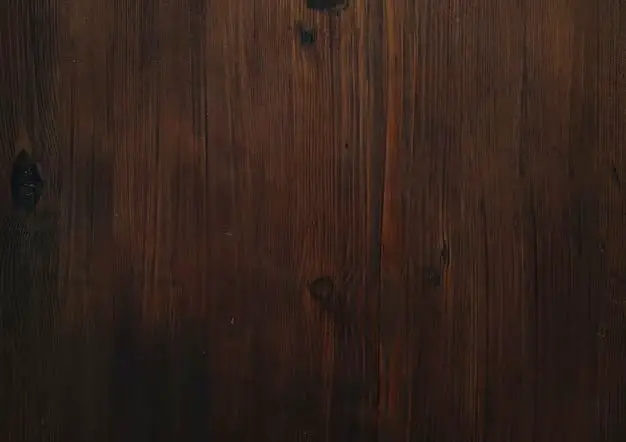When choosing wood for furniture, flooring, or other projects, the darkness of the wood is an important consideration for many people. Some of the darkest woods come from tropical trees and have striking chocolate or blackish tones. Knowing which species produce the darkest hardwoods can help guide wood selection and achieve the desired visual impact.
Measuring Wood Darkness
The darkness or lightness of a wood species is determined by the color of its heartwood. Heartwood is the older, interior wood at the center of a tree. It contains chemicals and extractives that give it its characteristic color. The shade can range from nearly white to almost black.
Some key ways to quantify wood darkness include:
- Color tone – Measured on a scale from light to dark
- Color saturation – Refers to the intensity or richness of the color
- Color hue – The tint of the color (red, brown, yellow, etc)
The Darkest Hardwoods
Based on color tone and saturation, here are some of the very darkest woods in the world:
African Blackwood
African blackwood is among the darkest of all woods. It features a blackish-brown heartwood that ranges from a dark chocolate color to pure black. Native to tropical Africa, it’s an extremely dense wood used mainly for musical instruments and woodturning.
Gaboon Ebony
Gaboon ebony is another supremely dark wood native to Africa’s equatorial rainforests. Its heartwood is a rich, chocolaty brown that can appear jet black. It has a fine texture and takes an incredible polish.
Cocobolo
This tropical hardwood from Mexico and Central America produces lumber with a dramatic color range from orange, brown, and red to almost black. Highly prized for its beauty and workability, cocobolo is popular for intricate woodwork and high-end instruments.
Lignum Vitae
Lignum vitae is the densest wood commercially available. It features a dark greenish brown or almost black heartwood with interesting streaks and patterns. Native to tropical regions, it has natural oils that enhance its rich coloration.
Other Very Dark Hardwoods
Some other woods that can achieve very dark tones include:
– Makore – Dark reddish brown, sometimes with black streaks
– Grenadilla – Black with reddish or brown undertones
– African blackwood – Purplish to reddish black
– Bubinga – Reddish or purple-brown, sometimes very dark
– Purpleheart – Dark violet to almost black when freshly cut
While most don’t reach the pure black color of ebony or African blackwood, these species still make very dark woods when finished. Exotic tropical species like these are valued for their rarity and intense hues.
Factors Affecting Heartwood Darkness
Several factors influence the darkness of a wood’s heartwood, including:
Tree age –
Older trees tend to have darker heartwood since the chemical extractives that color the wood intensify over time.
Growing conditions –
The soil, climate, and surrounding environment impacts heartwood color. The same species can produce slightly different color tones based on where it’s grown.
Cutting and drying method –
How a tree is harvested, sawn, and dried affects wood color. Careful processing helps stabilize the natural color.
UV exposure –
Exposure to sunlight causes gradual darkening over time in some wood species, while bleaching color in others.
Finishing process –
Stains, clear coats, and other finishing steps influence the final color rendition. The wood’s natural color should be considered when choosing finishes.
| Wood Species | Color Tone | Color Saturation | Common Uses |
|---|---|---|---|
| African Blackwood | Very dark brown to black | High | Musical instruments, turned objects |
| Gaboon Ebony | Blackish brown to black | Very high | Decorative woodwork, musical instruments |
| Cocobolo | Dark orange to blackish brown | Medium to high | Fine furniture, musical instruments |
| Purpleheart | Dark violet when fresh | Medium to high | Decking, flooring, millwork |
Using Dark Woods
The most common applications for very dark woods include:
- Flooring – Dark wood floors can create a luxurious, sophisticated look.
- Furniture – Used for accents, inlays, and highlights on tables, cabinets, chairs, etc.
- Millwork – Ideal for doors, trim, paneling, stairs, and other architectural details.
- Turned objects – Dark woods make stunning bowls, pens, glassware, and art pieces.
- Musical instruments – Used for high-end guitars, clarinets, oboes, bagpipes, and pianos.
While dark woods can make bold statements, moderation is advised. Using them sparingly helps maintain balance. Combining with lighter woods prevents spaces from feeling too somber or monotonous.
Considerations When Working with Dark Woods
Dark-hued lumber presents some unique considerations:
- Rarity – Some tropical dark woods like ebony are endangered. Seek sustainably harvested material.
- Density – Many dark woods like lignum vitae are extremely dense and hard. They require sharp tools.
- Finishing – Dark woods’ color and grain deserve an enhancing clear finish, not opaque paint.
- Contrast – Allow the wood’s natural pattern and color contrasts to stand out.
- Cost – The rarest, darkest woods often come with a high price tag.
With care and finesse, dark woods can help create truly special carpentry, furniture,turning, and other work. Their stunning colors and grain patterns showcase nature’s beauty. While challenging to source sustainably and work with, they offer sophistication and elegance in wood products.
Conclusion
When seeking out the most striking dark-hued woods, tropical species from Africa, Central America, and South America stand out. Ebony, African blackwood, cocobolo and lignum vitae consistently display rich, saturate blackish tones. Other woods like makore, bubinga, and purpleheart also achieve very dark colors when finished. Careful selection, processing, and finishing allows these woods’ exotic grain patterns and colors to shine. While difficult to source sustainably, dark woods create depth and visual impact unrivaled by lighter species. Their captivating darkness makes them prized for high-end woodworking, furniture, musical instruments, and other applications.


